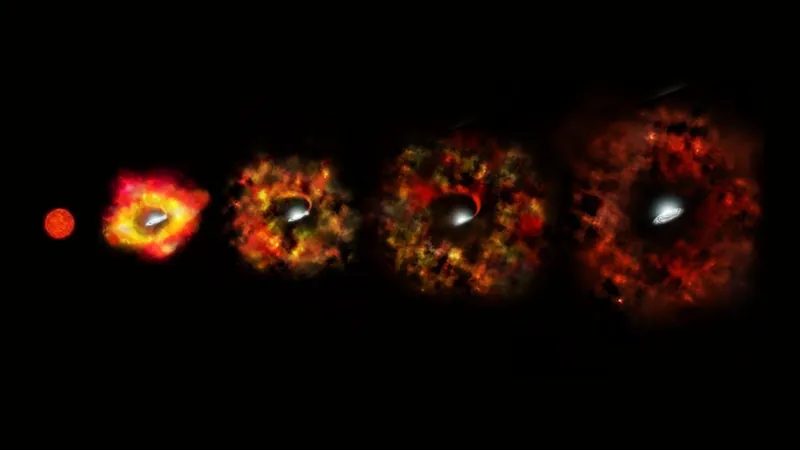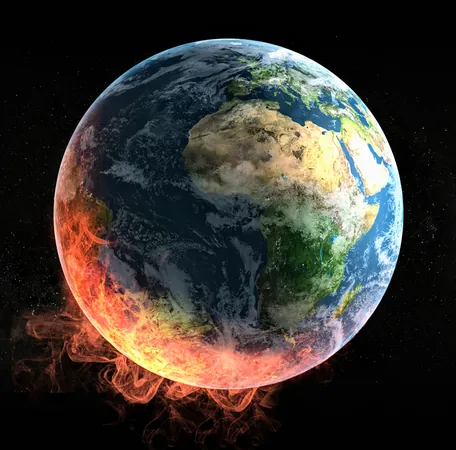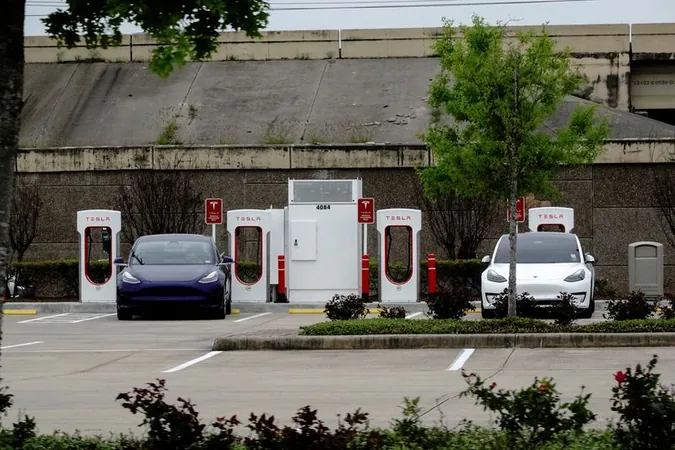
Shocking Discovery: A Star's Mysterious Disappearance in Andromeda Signals the Birth of a Black Hole!
2024-11-11
Author: Michael
A Direct Collapse into a Black Hole
In an astonishing astronomical revelation, a massive star in the Andromeda galaxy has seemingly bypassed the traditional supernova explosion process and instead collapsed directly into a black hole. This extraordinary event challenges our understanding of stellar evolution and invites us to reconsider what we know about the life cycles of massive stars.
Understanding Stellar Balance
Stars, including those much larger than our Sun, undergo a delicate balancing act between the forces of fusion, which push outward, and the relentless pull of gravity, which seeks to collapse them. When massive stars, typically more than eight times the mass of the Sun, exhaust their hydrogen fuel, they can no longer support themselves against gravity. This leads to their dramatic end—a supernova explosion that usually leaves behind either a neutron star or a black hole.
The Case of M31-2014-DS1
However, researchers have made a groundbreaking discovery related to a particular star, designated M31-2014-DS1. This star, located in our neighboring Andromeda galaxy (M31), captured astronomers' attention when it began to brighten in 2014. Remarkably, it maintained a steady luminosity for approximately one thousand days before starting to fade dramatically over the span of another thousand days (2016-2019). Yet, shockingly, when astronomers searched for it in 2023, M31-2014-DS1 was completely undetectable in deep imaging observations.
Expelled Dust and the Absence of Brightness
Recent papers, including one led by postdoctoral scholar Kishalay De from the Kavli Institute for Astrophysics and Space Research at MIT, delve into this unprecedented behavior. The star was initially estimated to have around 20 solar masses, but by the time of its demise, only about 6.7 solar masses were left. The research indicates that while the star was surrounded by an expelled dust shell—typical after a supernova—the absence of any luminous outburst led researchers to consider that something unusual had occurred: a 'failed' supernova event.
The Mechanism Behind the Collapse
"This peculiar and sustained fading is extraordinary among massive stars. The rapid decline in brightness suggests that nuclear burning came to an abrupt halt, resulting in a core collapse without a subsequent supernova explosion," the authors explain. Essentially, while a supernova generates immense energy capable of expelling outer layers of the star, in this case, no such explosion took place.
Why Did the Supernova Fail?
But what can explain the failure of a massive star to explode? The mechanisms leading to supernova explosions are intricate. Inside a collapsing stellar core, extreme conditions induce a process known as neutronization. During this process, electrons and protons undergo fusion, resulting in neutrons and a cascade of neutrinos. The energy released in this process can create shock waves that, if powerful enough, will drive a supernova explosion. In M31-2014-DS1’s case, the crucial revival of the neutrino shock never occurred, leading to a direct collapse into a black hole.
The Formation of a Black Hole
Researchers estimate that approximately 98% of M31-2014-DS1’s mass—around 6.5 solar masses—ultimately formed a black hole, representing a significant mass collapsing into a core that exceeds the threshold for neutron star formation.
Implications on Stellar Death
This incident isn’t unique; M31-2014-DS1 becomes part of a small roster of candidates for failed supernovae. One noteworthy example is N6946-BH1, a star that disappeared in 2009 in the Fireworks Galaxy, further hinting that our understanding of stellar death is still evolving.
Future Discoveries Await
As we delve deeper into these cosmic mysteries, each discovery refines our grasp of stellar evolution and the complex phenomena that govern the universe. This perplexing event raises new questions and emphasizes the need for ongoing observational efforts in the study of massive stars and their fates. Could there be more hidden black holes born from the collapse of stars that we have yet to discover? Only time, and further research, will tell!









 Brasil (PT)
Brasil (PT)
 Canada (EN)
Canada (EN)
 Chile (ES)
Chile (ES)
 España (ES)
España (ES)
 France (FR)
France (FR)
 Hong Kong (EN)
Hong Kong (EN)
 Italia (IT)
Italia (IT)
 日本 (JA)
日本 (JA)
 Magyarország (HU)
Magyarország (HU)
 Norge (NO)
Norge (NO)
 Polska (PL)
Polska (PL)
 Schweiz (DE)
Schweiz (DE)
 Singapore (EN)
Singapore (EN)
 Sverige (SV)
Sverige (SV)
 Suomi (FI)
Suomi (FI)
 Türkiye (TR)
Türkiye (TR)